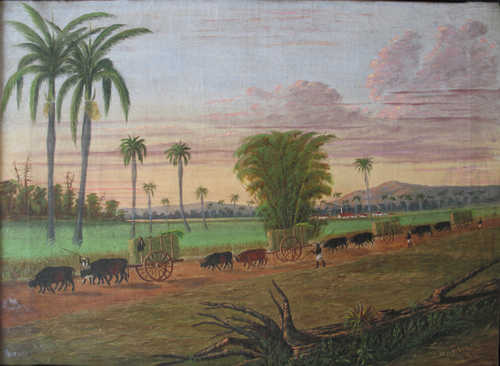Keywords: Economics
Item 70431
Home economics cottage, Farmington State Normal School, ca. 1940
Contributed by: Mantor Library at UMF Date: circa 1940 Location: Farmington Media: Photographic print
Item 70656
Home Economics students grilling, University of Maine at Farmington, ca. 1971
Contributed by: Mantor Library at UMF Date: circa 1971 Location: Farmington Media: Photographic print
Item 151771
Seboomook Farm, Seboomook, 1923
Contributed by: Maine Historical Society Date: 1923 Location: Seboomook Client: Great Northern Paper Company Architect: Great Northern Paper Company
Item 150271
Thomas U. Coe estate store & office building, Bangor, 1928
Contributed by: Maine Historical Society Date: 1928 Location: Bangor Client: Thomas U. Coe Architect: Eaton W. Tarbell
Exhibit
Land Claims, Economic Opportunities?
The landmark 1980 Maine Indian Land Claims Settlement Act provided $81.6 million to Maine Indians for economic development, land purchase and other purposes. The money and increased land holdings, however, have not solved economic and employment issues for Maine Indians.
Exhibit
When Europeans arrived in North America and disrupted traditional Native American patterns of life, they also offered other opportunities: trade goods for furs. The fur trade had mixed results for the Wabanaki.
Site Page
A historic mill museum dedicated to creating exhibits that will educate the community and highlight mill history; as a research collection to assist the public in locating information on the mill's buildings, history and employees; and to ensure the story of Biddeford's economic and industrial revolution remains relevant and accessible to diverse audiences.
Site Page
"Economic History of Main Street, Northeast Harbor 21st Century Decline In 2008, a fire erupted in the Colonial’s restaurant on Main Street and…"
Story
Passamaquoddy Maple, reaching back to our ancestral roots
by Marie Harnois
Tribally owned Passamaquoddy Maple is an economic and cultural heritage opportunity
Story
Lift the Boats for Everybody
by Andrea Cianchette Maker
The story of her immigrant great grandfather and her nonprofit organization Focus Maine.
Lesson Plan
Primary Sources: The Maine Shipyard
Grade Level: 9-12
Content Area: Social Studies
This lesson plan will give students a close-up look at historical operations behind Maine's famed shipbuilding and shipping industries. Students will examine primary sources including letters, bills of lading, images, and objects, and draw informed hypotheses about the evolution of the seafaring industry and its impact on Maine’s communities over time.
Lesson Plan
Portland History: Construction, Preservation and Restoration of the Portland Observatory
Grade Level: 3-5, 6-8
Content Area: Science & Engineering, Social Studies
Included here are activities based in economics, mathematics, physics, social studies, civics and language arts. Students can debate the issues surrounding preservation and urban development as well as the changing value of money.


















